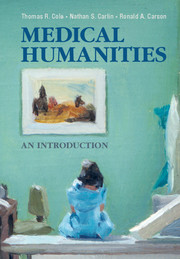Book contents
2 - Constructing Disease
from Part I - History and Medicine
Summary
“When I use a word,” Humpty Dumpty said, in rather a scornful tone, “it means just what I choose it to mean – neither more nor less.”
– Lewis CarrollAbstract
This chapter explores the history of theories and conceptions of disease, while also attending to the epidemiological and symbolic impact of key diseases such as leprosy, bubonic plague, and influenza. Beginning with a discussion of the Hippocratic (or humoral) theory of disease, it examines how this theory came to be challenged by Renaissance humanists and, by the nineteenth century, overturned by the germ theory of disease. Then it considers some of the challenges facing us in the twenty-first century, including public health measures, the genetic revolution, and the “medicalization” of society.
INTRODUCTION
Societies, like Humpty Dumpty, decide what words mean. They decide who deserves sympathy and blame, the social role of the sick person, and the meaning of physical and mental illness. So too is society broken down into constituent pieces that have distinct perspectives and needs: patients, physicians, religious institutions, government, third-party payers, and pharmaceutical companies. Diseases, in other words, are not so much discovered by physicians and scientists alone as they are constructed by various competing social groups.
- Type
- Chapter
- Information
- Medical Humanities , pp. 40 - 56Publisher: Cambridge University PressPrint publication year: 2014



